My senior capstone project for my graphic design degree, Your Painless Guide to Shakespeare, is finished! ? I wrote, designed, and illustrated the entire book, and it was exhibited at my university in December.
This project was a wonderful chance to read more Shakespeare plays, which reminded me why I love Shakespeare. I was one of those nerdy high schoolers who got excited to read Hamlet and Macbeth and fell in love with Shakespeare’s rich, beautiful language. 🙂
But there are a lot of steps to get a book from this…
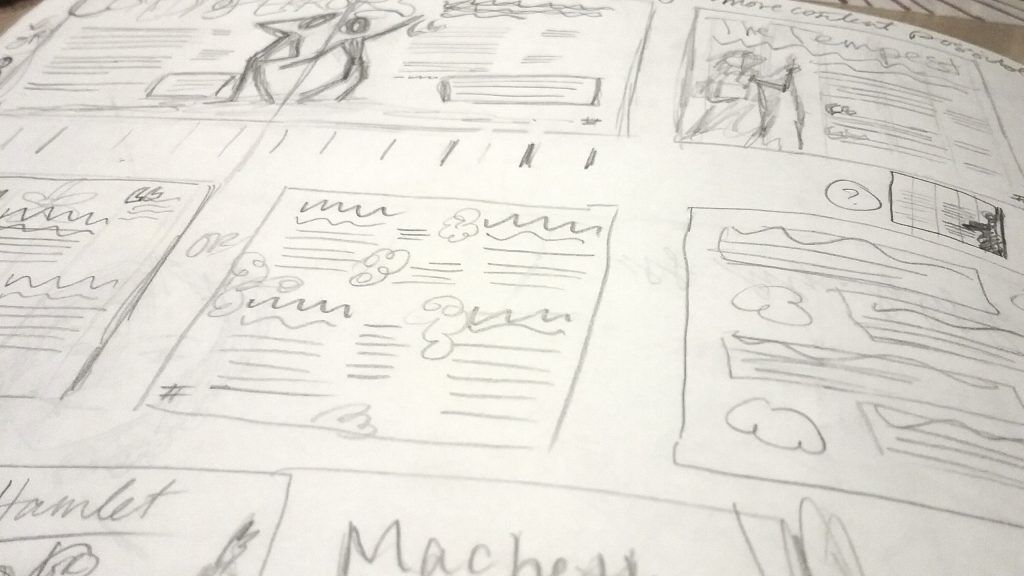
… to this.
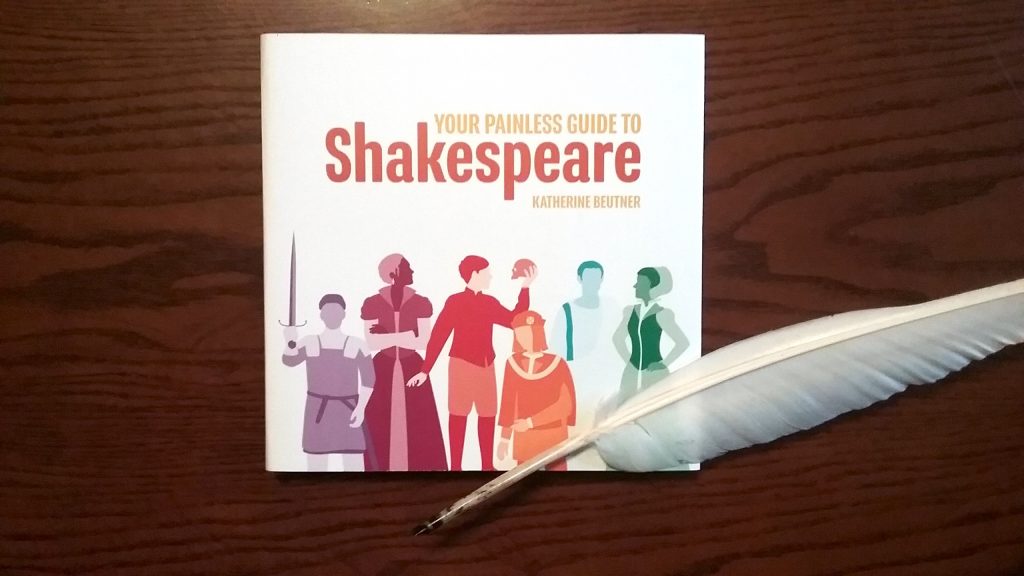
This is the first part of two behind-the-scenes posts about how I designed Your Painless Guide to Shakespeare. It should be interesting if you’ve ever wondered about how books are designed and printed.
Step 1: Getting the Book Rolling
Choosing an idea was hard.
I had to choose a topic I’d enjoy working on for the whole semester. It also had to be a book I could actually finish in one semester. (Because I wanted to graduate!)
I finally pitched a few ideas to my professor, including an epistolary story about an archaeologist, a book about storytelling, and a book that introduces Shakespeare plays. Eventually, Shakespeare won.
Given a little time and effort, anyone can enjoy Shakespeare. After all, these plays are still popular after four centuries because the stories appeal to a wide audience and can be appreciated on multiple levels. If you do get a chance to see or read a Shakespeare play, reading a summary beforehand will definitely improve your enjoyment and understanding of what’s going on. So that’s what I included in the book.
Initially, I wanted to include a bit about every Shakespeare play in the book. My professor wisely advised that I cut this in half. So I ended up doing eighteen. This was a good call. (Plus, some plays aren’t well-known, are rarely performed, or were only partly written by Shakespeare himself.) And the book was still 56 pages long.
I created an outline of what would be on each page of the book (although this was modified several times), and then I was ready to get out my research hat.
… Or, in this case, I was ready to visit the library and check out lots of Shakespeare plays.
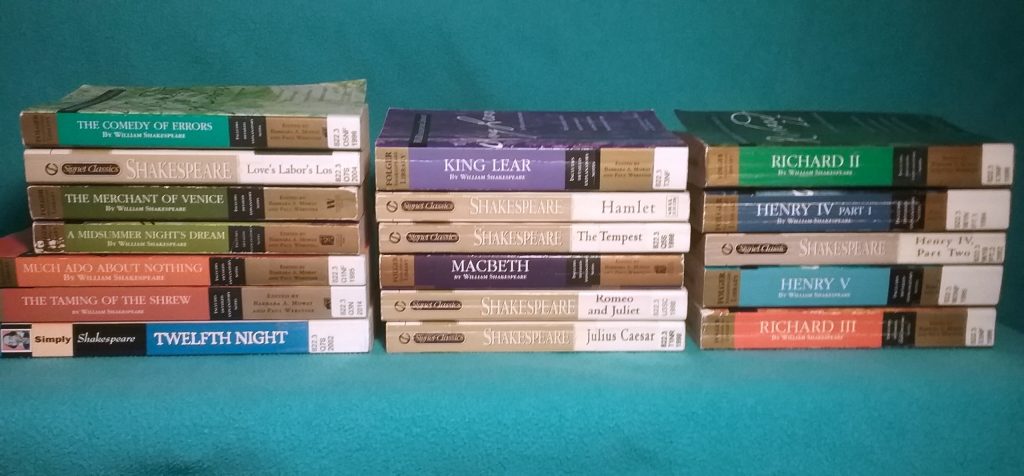
Step 2: Library Time
Before you can write or design much of anything in a nonfiction book, you have to do research. Fortunately, I was already familiar with many Shakespeare plays, and I only had to include eighteen of them.
The Folger Digital Texts site is a great way to access the text of Shakespeare plays online. But the Folger Shakespeare Library print editions have scene summaries and footnotes in the margins. (Do you have any idea how helpful this is when you’re trying to read lots of plays quickly?) I appreciate the Folger editions very much. They are the best. Just saying.
As a writer, I just opened up a Scrivener file and made a separate document for each play. Much more organized than just stuffing all my notes into one huge Word document. (Thank goodness for Scrivener.)
I also researched some fun facts and famous quote for each play.
Quick! Where do you think these quotes came from?
(Click on the photo to view the play.)
Step 3: Figure out Logistics
For every book you’ve ever read, someone had to answer all the not-so-glamorous questions:
- Where is the book going to be printed?
- What size will the pages be?
- What will the paper’s weight and finish be?
- What kind of cover will it have?
- Oh, and how much is this going to cost?
At the start of the process, I visited a local bookbindery to see (and touch!) the different papers that were available, see the quality of their work, and ask about pricing and production time. (For a really small run, each book costs quite a bit.)
I chose to have the pages cut to 7″x7″ and printed on thick, glossy paper to minimize the show through of the ink.
Then I was officially ready to start illustrating.
Hope you enjoyed Part 1! Look for Part 2 next month.
Like what you read? Take a minute and share it with your friends or connect with me online!
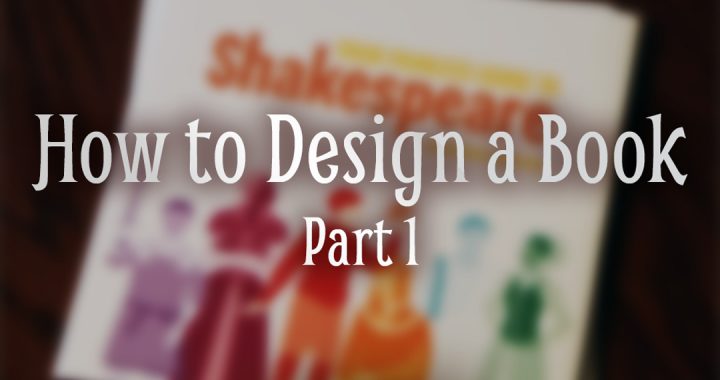


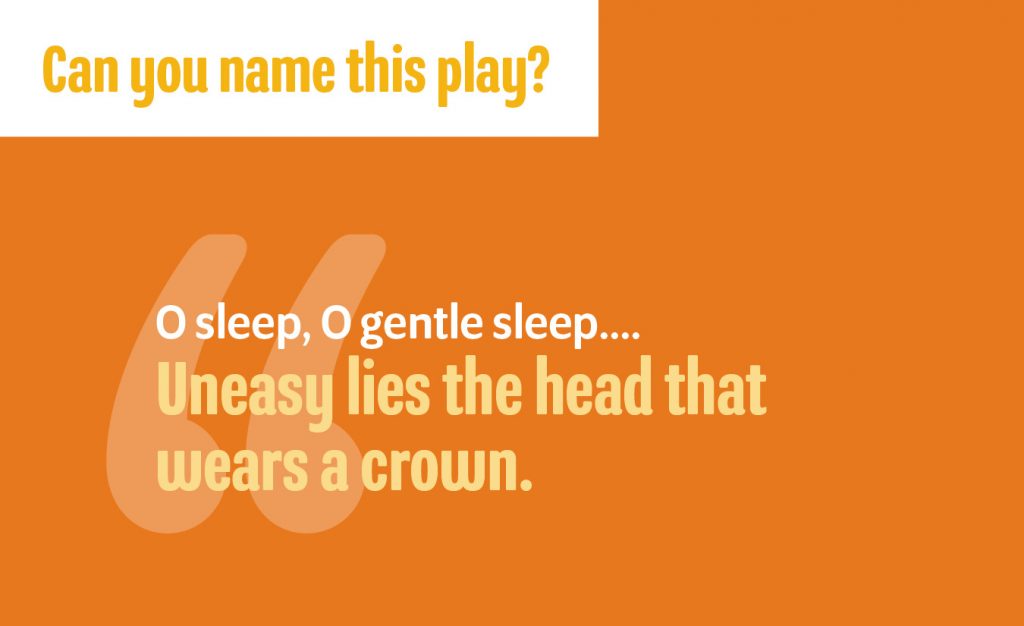
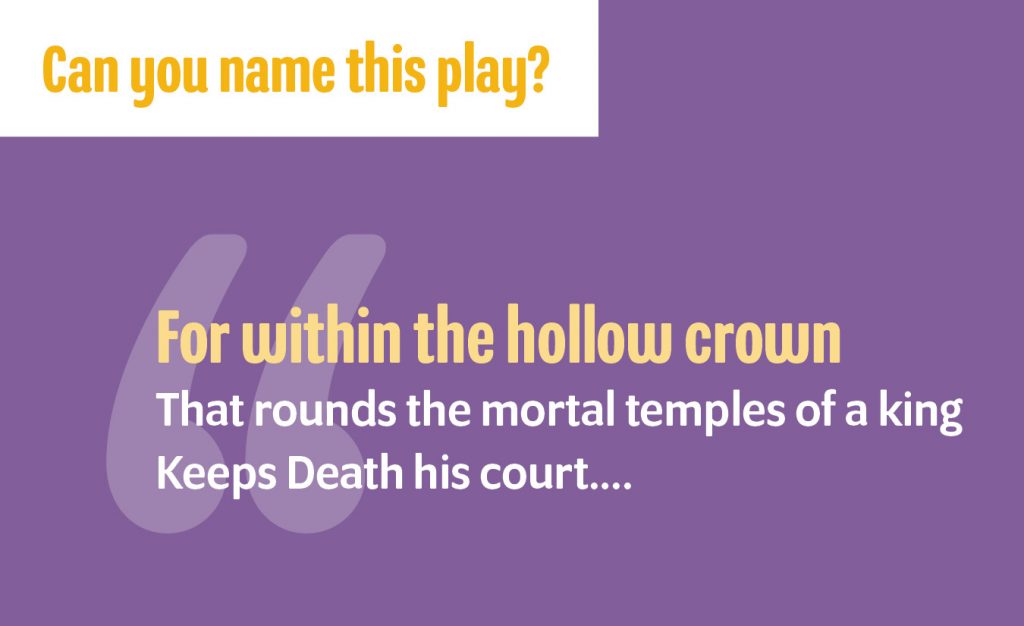
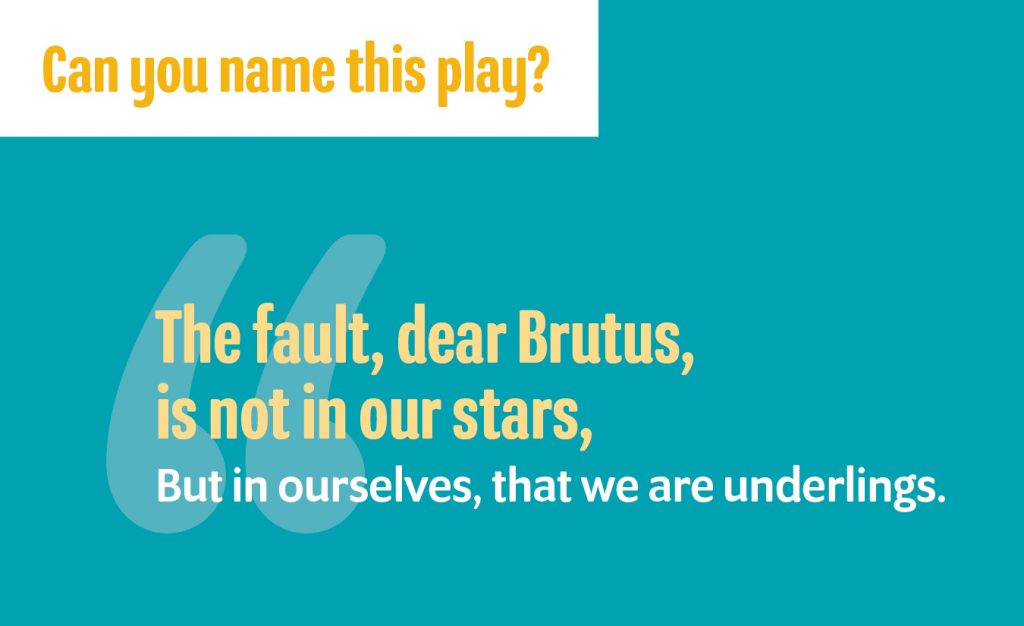

Pingback: How to Design a Book, Part 2 – The Silver Pencil
Pingback: How to Design a Book, Part 2 – The Silver Pencil